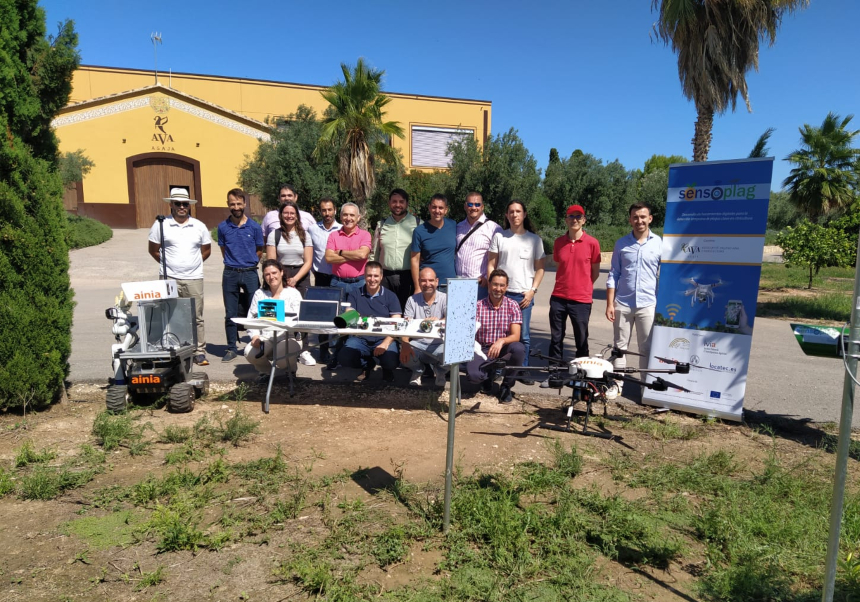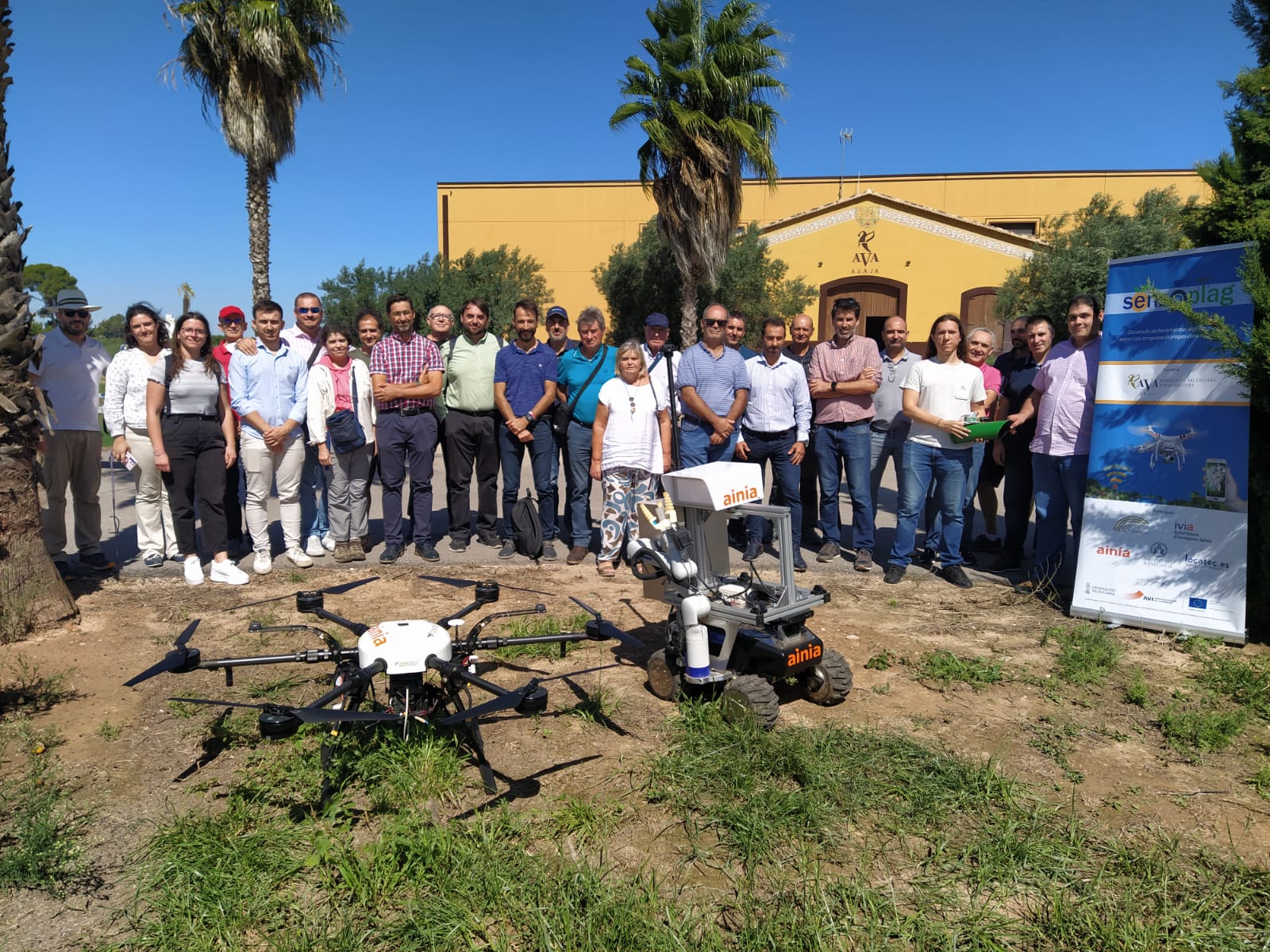
Researchers present advanced technologies in SENSOPLAG to combat pests in the Valencian citriculture.
On September 22nd, members of the SENSOPLAG project presented the innovative technologies developed in the last two years to fight in a first, accurate and sustainable way the main pests that affect citrus in the Valencian region. The event took place at the Finca Sinyent of the Valencian Farmers' Association (AVA-ASAJA) and brought together different representatives of the agricultural sector.
The SENSOPLAG project has focused on addressing critical pests for the Valencian citriculture, such as the South African Cotonet, Orchid Thrips, Oriental Red Mite and, equally important, threats not yet present in the region, such as the vectors transmitting Huanglongbing (HLB).
During the presentation day, Cristóbal Aguado, president of AVA-ASAJA, opened the event emphasizing the importance of digitization in agriculture. He stressed that projects such as SENSOPLAG are essential to adapt to the demands of the European Green Pact, since new technologies allow a more effective prevention and control of pests and reduce the need for phytosanitary products.
Javier Bartolomé, regional secretary of Agriculture, emphasized the need to advance technologically in order to reduce production costs and improve farmers' yields in the Valencian region.
Researchers from the Valencian Institute of Agricultural Research (IVIA) presented their contributions to the SENSOPLAG project. Enrique Moltó detailed the application of satellite remote sensing and orthophoto information to detect photosynthetic stresses that cause phytophthora in trees, while Sergio Cubero showed prototypes of intelligent chromotropic plots, equipped with solar panels and low consumption batteries, which facilitate the continuous monitoring of pests without the need to travel to the field.
Lorenzo Cervera, project manager of the AINIA technology center, highlighted the experiment that combines data from an eight-helix drone with a hyperspectral and multispectral camera and an autonomous sensorized vehicle, although he admitted challenges in correlating the data obtained with pest damage.
The REDOLí group from the IDM of the University of Valencia also played a crucial role in the project, with Sheila Sánchez presenting a prototype of an electronic nose that combines electrochemical and optical sensors to detect the presence of the South African Cotonet by detecting the volatile organic compounds they emit, thus improving pest prediction models in citrus crops.
Salvador Rodrigo, representing Locatec Aplicacions Informàtiques, advanced the development of a mobile application that will provide farmers with an informative guide, photographic guide and pest recognition based on a bank of thousands of images, along with probability levels and the ability to send positive alerts. Locatec has also created a technology integration platform and a phytosanitary treatment recommender.
Carlos Montesinos, innovation agent of AVA-ASAJA, highlighted the role of this organization in coordinating and transferring the results of the project to farmers. SENSOPLAG has been funded by the Generalitat Valenciana, through the Valencian Agency for Innovation (AVI), and the European Union.
The presentation of the SENSOPLAG project marks an important step in the search for technological solutions to strengthen the Valencian citriculture and protect it against current and emerging threats. The commitment of the agricultural and scientific community shows that innovation and collaboration are key to the sustainable future of agriculture in the region.









